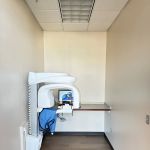Understanding Hypercementosis: Causes, Symptoms, and Treatment Options
- 1. What is Hypercementosis?
- 2. Causes of Hypercementosis
- 3. Symptoms of Hypercementosis
- 4. How is Hypercementosis Diagnosed?
- 5. Treatment Options for Hypercementosis
- 6. Real-Life Case Study: Managing Hypercementosis
1. What is Hypercementosis?
Hypercementosis is a dental condition in which an excessive amount of cementum, the hard tissue covering the roots of teeth, is deposited. Cementum typically helps anchor the teeth in the jawbone, but when it accumulates abnormally, it can lead to complications. While this condition is often harmless, it can cause dental issues such as tooth mobility or difficulty with extractions.
Understanding hypercementosis is important for both dental professionals and patients to ensure appropriate care and management. The condition can affect both primary and permanent teeth, though it is more commonly seen in adults.
2. Causes of Hypercementosis
Hypercementosis can be caused by a variety of factors, ranging from genetic predisposition to certain medical conditions or habits. Some common causes include:
- Chronic Inflammation: Ongoing inflammation from periodontal disease or trauma can lead to excessive cementum deposition.
- Occlusal Stress: The pressure caused by misalignment of teeth, bruxism (teeth grinding), or excessive bite forces can trigger hypercementosis.
- Genetics: Some individuals may be genetically predisposed to developing this condition, especially if it runs in their family.
- Endodontic Treatment: Teeth that have undergone root canal therapy may develop hypercementosis as a response to the treatment process.
- Age: Older individuals are more likely to experience hypercementosis due to the natural wear and tear on teeth over time.
While these factors can increase the likelihood of hypercementosis, its exact cause in each case can vary. It's important for dental professionals to evaluate all potential contributing factors when diagnosing the condition.
3. Symptoms of Hypercementosis
Many people with hypercementosis may not experience any noticeable symptoms. The condition is often discovered incidentally during routine dental exams or X-rays. However, in some cases, symptoms may include:
- Tooth Mobility: If the cementum buildup affects the tooth's root stability, the tooth may become loose or mobile.
- Difficult Extractions: Excess cementum can make it harder for dentists to extract teeth, especially if the tooth has been treated with a root canal.
- Localized Pain: In rare cases, the excess cementum may cause discomfort or pain in the affected tooth.
Because the condition is often asymptomatic, regular dental checkups and imaging are essential for early detection. If you experience any discomfort or difficulty with a tooth, consult your dentist for a thorough evaluation.
4. How is Hypercementosis Diagnosed?
Hypercementosis is typically diagnosed through a combination of clinical examination and radiographic imaging, such as X-rays. X-rays are crucial in identifying the extent of cementum buildup around the tooth’s root and any possible complications, such as root resorption or tooth decay. During your dental visit, the dentist will carefully examine the teeth, noting any signs of mobility or other issues that might suggest hypercementosis.
In some cases, further diagnostic tests may be needed if there are concerns about the underlying causes, such as genetic factors or systemic health conditions. However, most cases of hypercementosis can be diagnosed with a simple dental X-ray.
5. Treatment Options for Hypercementosis
In many cases, hypercementosis does not require specific treatment, as it may not cause any symptoms or complications. However, if the condition leads to discomfort, mobility, or extraction difficulties, treatment options may include:
- Monitoring: If hypercementosis is mild and asymptomatic, your dentist may simply monitor the condition over time to ensure it does not worsen.
- Tooth Stabilization: In cases of tooth mobility, stabilization through splinting may help to improve tooth function and prevent further movement.
- Root Canal Treatment: If the tooth is infected due to hypercementosis, root canal therapy may be recommended to treat the infection and alleviate symptoms.
- Extraction: If the tooth is severely affected by hypercementosis and is causing significant pain or difficulty, extraction may be necessary.
Ultimately, treatment for hypercementosis depends on the severity of the condition and any symptoms you may be experiencing. Early intervention can help prevent further complications and ensure a better prognosis for affected teeth.
6. Real-Life Case Study: Managing Hypercementosis
Consider the case of John, a 55-year-old patient who came in for a routine dental exam. His X-rays revealed significant cementum buildup on the roots of several teeth, a condition that had developed over time due to chronic bruxism. Though John did not experience pain, his dentist noted some mobility in one of his molars, which made extraction more challenging.
After discussing treatment options, John's dentist decided to monitor the condition closely while also stabilizing the affected tooth with a splint. Over the next few months, John’s tooth remained stable, and he reported no further discomfort. This case highlights the importance of early detection and intervention to manage hypercementosis effectively.
If you're concerned about hypercementosis or want to learn more about how to manage it, visit Dentistry Toothtruth for more information and personalized recommendations.







 Arise Dental - Your Local Peoria Dentist4.0 (205 review)
Arise Dental - Your Local Peoria Dentist4.0 (205 review) Light Dental Studios of University Place4.0 (279 review)
Light Dental Studios of University Place4.0 (279 review) Dentists of South Pasadena4.0 (124 review)
Dentists of South Pasadena4.0 (124 review) Aurora Dental Care4.0 (153 review)
Aurora Dental Care4.0 (153 review) ClearChoice Dental Implant Center4.0 (383 review)
ClearChoice Dental Implant Center4.0 (383 review) Kansas City Dentures and Implants5.0 (15 review)
Kansas City Dentures and Implants5.0 (15 review) The Importance of Oral Health Education During Pregnancy for a Healthy Pregnancy
The Importance of Oral Health Education During Pregnancy for a Healthy Pregnancy Best Tips for Brushing Your Teeth Properly for Healthy Gums: Essential Techniques for Oral Health
Best Tips for Brushing Your Teeth Properly for Healthy Gums: Essential Techniques for Oral Health Why Skipping Dental Checkups Can Lead to Bigger Oral Health Problems
Why Skipping Dental Checkups Can Lead to Bigger Oral Health Problems Advantages of Porcelain Dental Restorations
Advantages of Porcelain Dental Restorations How Can Diabetes Cause Tooth and Gum Problems? Preventing and Managing Oral Health Issues
How Can Diabetes Cause Tooth and Gum Problems? Preventing and Managing Oral Health Issues Healthy Habits for Promoting Good Oral Health and Hygiene: Tips for a Healthy Smile
Healthy Habits for Promoting Good Oral Health and Hygiene: Tips for a Healthy Smile